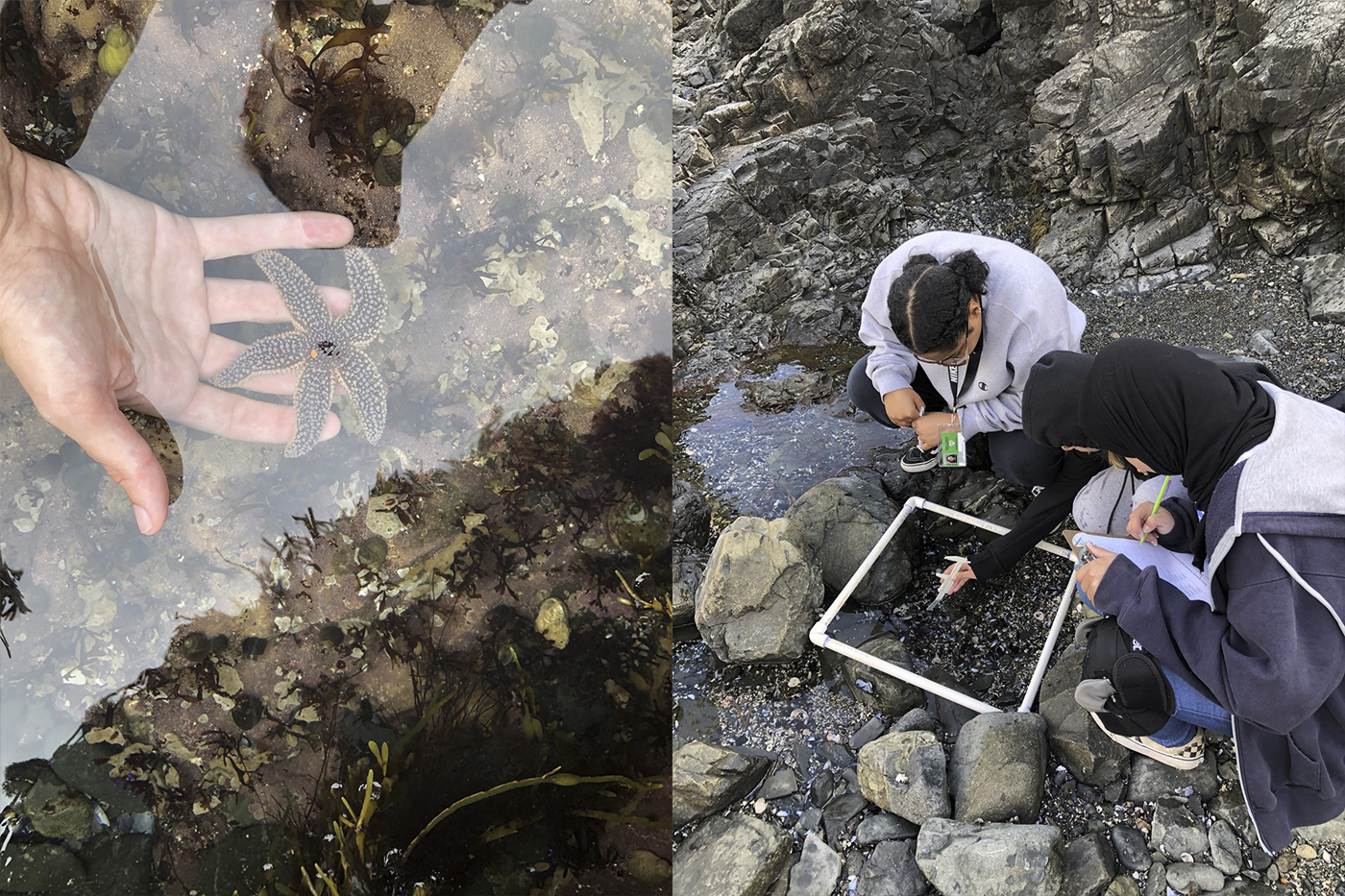“Whoa, what is that? Ewww – It’s so slimy!”
The first reactions students have to the animals in our touch tanks are all over the map, and the first comments from this group of high schoolers were no different. We had just introduced a group of 10 sophomores to the marine animals in our touch tanks, including our Calico lobster named Marshmallow, and our extremely slimy Moon Snails.
This was the second rotation of three for these visiting students, who were visiting the Marine Science Center as part of the School to Sea program with Lynn Public Schools, funded through a generous grant from the Filene Foundation. This past Fall, we hosted nearly 500 students to introduce them to the marine environment from a scientific perspective.
Students learned about the intertidal zone in the classroom and then experienced those lessons first hand out in the field. During the classroom visits, the students learned about the different habitat elements that make up the intertidal zone on a rocky shore, then practiced with the tools that they would be using for data collection during their field visit.
 After classroom visits, the students and their teachers visited the Marine Science Center and used their new knowledge of the intertidal zones and scientific data collection tools to explore tide pools and collect data.
After classroom visits, the students and their teachers visited the Marine Science Center and used their new knowledge of the intertidal zones and scientific data collection tools to explore tide pools and collect data.
The students were also led on tours of the Marine Science Center research labs and facilities, and learned about the history and geology of East Point and the region. The students learned about the work that MSC researchers are doing, including the robot mussels from the Helmuth Lab, the Antarctic Ice fish research in the Detrich Lab, the sediment coring done by the Munoz Lab.
The tidepools featured a variety of marine invertebrates, depending on the day, time, and tide – knotted wrack and other seaweed was always present, as well as small litorina snails and mussels, but some students were lucky enough to find sea stars, and well-camoflagued spider crabs. Some even made it their goal to find as many crabs as they could.
After the tidepool exploration and outdoor tours, students visited our touch tanks to see some other animals that didn’t happen to be in the tidepools that day, and some that don’t usually live in our intertidal. This is where the best exclamations happened – the “ewww” from before was thanks to one of our two Moon Snails.
These snails have a distinct round ‘moon-shaped’ shell, and exude a slimy secretion. They are predators, and eat by surrounding mollusks (often mussels) and drilling a hole into the shells to access the meat of the mollusks inside. We told the students this and showed them some empty mussel shells with the tell-tale hole.
When they saw the perfectly round holes bored through the shells, the “ewwws” changed to “whoas.” It was especially rewarding to see some of the students who started out the day being nervous touching the animals, then became comfortable enough to challenge themselves to hold some of the animals after being shown the proper technique by the outreach staff.
All of this was possible due to our partnership with Lynn Public Schools and the generous funding provided by the Filene Foundation. Thanks to this support, the students who took part in the program gained more than just a day at the seashore and new marine biology vocabulary. They gained a sense of place in their local environment, new knowledge about the ocean and its inhabitants, and a feeling of stewardship over the marine habitats around them.

